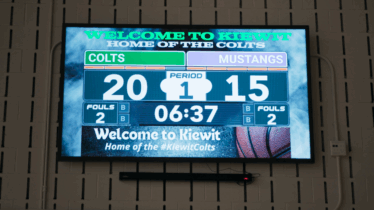If your school district is making the switch to Chromebooks, it’s likely that teachers and students will also be using Google Docs and Google Slides.
While these cloud-based platforms are intuitive and easy to learn, there’s a lot you can do in them. To help you figure it all out, Samsung has created “Chromebook hacks for the new classroom” — a series of kid-hosted how-to videos that cover everything students need to know, from the absolute basics, right through to pro tips. Students can learn how to open new assignments, create and format slides, check spelling and grammar in documents, get a word count and use smart features like Voice Typing.
While you’re at it, don’t forget to check out the videos on Google Classroom, too — for students and their parents — as well as other topics covered in the series, like Chromebook beginner’s tips and how to look after your Chromebook.
For students who are new to Google’s cloud apps, here are a few essential tips:
Student tips for Google Slides
Google Slides is a presentation design program that allows you to create digital slideshows incorporating text, images and even audio and video elements.
Starting a Google Slides assignment: If your teacher asks you to use Slides to create a presentation, you can open the app by clicking “Add or create” on the right side of the assignment page in Google Classroom. Choose “Slides” from the drop-down menu to open the Slides app and create a new slideshow. Add your title in the middle and click the plus sign at the top left to add more slides. (Tip: If you click the little arrow next to the plus sign, you can choose from several predesigned slide layouts, called templates.)
Building out your presentation: Creating a full slide presentation is easy. You’ll just type in the information you need on each slide and use the Insert menu to add multimedia elements like pictures and videos. Click “Background” to change the color of your slide or set a background image. To change the font, use the drop-down menu at the top, then click the plus or minus icon to make the text larger or smaller.
Organizing your presentation: If you need to reorder your slides, drag them up or down on the list. To add transitions, click Transition in the top toolbar and choose an effect from the drop-down menu. Click “Apply to all slides,” and then click Present to see a preview. When it’s time to present your slideshow to the class, click Present at the top right and select “Present from beginning.”
Student tips for Google Docs
Google Docs is a cloud-based word processing program that allows you to collaborate with your classmates and teachers in real time.
Getting started with Google Docs: You can access Docs from within Classroom by using the “Add or create” menu on an assignment page. This will open a new document. Use the menus at the top of the page to change the font or font size, and check out some of the other formatting tools such as the Insert Image button, which lets you add a picture to your document. Use the Bulleted List button to create a bulleted list, or the button next to it to make a numbered list.
Checking spelling and grammar: Google Docs will automatically give you spelling and grammar suggestions by underlining words in blue or red. Click on the underlined word to see the suggestion and decide whether to accept or reject it.
17 innovative lesson ideas for remote learning
Get your free pack of multidisciplinary lesson plans to teach modern students with modern tools. Download Now
Getting a word count and using voice typing: To see how much you’ve written, go to the Tools menu and click Word Count. You can also dictate rather than typing. Just choose “Voice typing” from the Tools menu, click the microphone and start talking.
Commenting on a classmate’s work: If you’re reviewing a classmate’s work, click the speech bubble to add a comment. Using the @ or address sign, you can tag a classmate or teacher in your comment to make sure they get a notification.
For more Chromebook tips and tricks for students, teachers and everyone else, be sure to check out Samsung’s other Chromebook how-to videos.
As you consider bringing more mobile technology to your district, discover the breadth of digital learning tools from Samsung. And if there are budget concerns — there usually are — learn how to create, present and secure grants for remote learning technology in this free guide.







